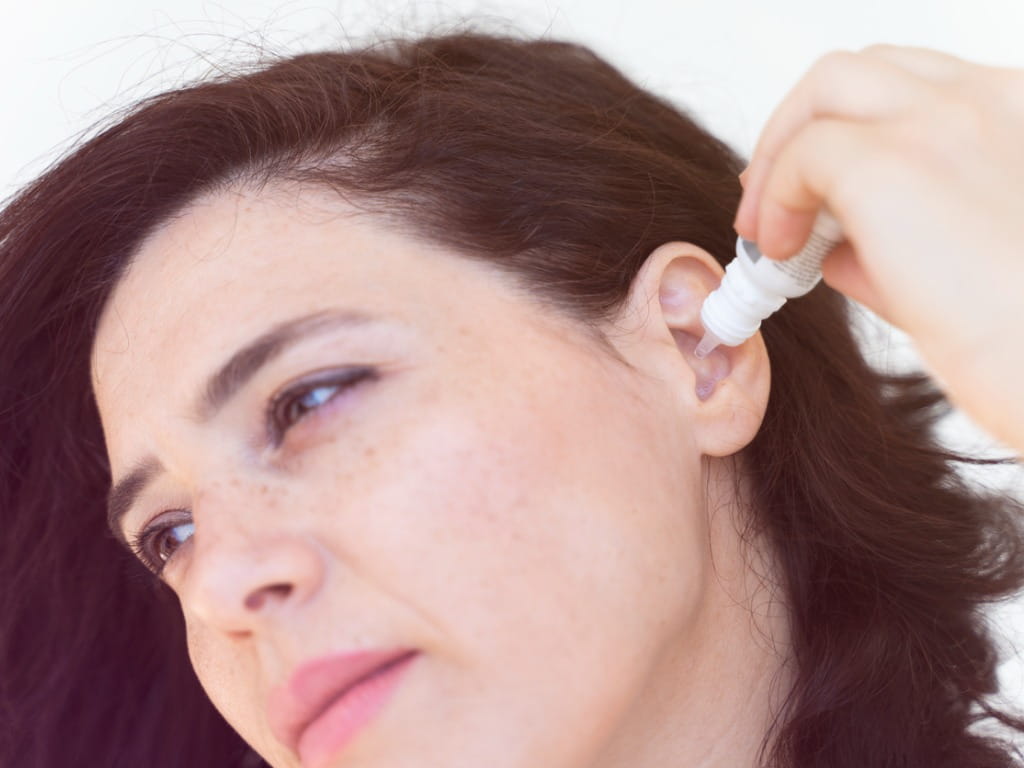Carbamide Peroxide Toxicity

The Bottom Line
Carbamide peroxide is most commonly used as an ear wax removal agent, oral rinse, and in home teeth-whitening products. High concentrations of carbamide peroxide can cause serious burns. Rarely, life-threatening toxicity can occur when carbamide peroxide is swallowed and oxygen bubbles form in the body and block blood flow to tissues.

The Full Story
Carbamide peroxide is a combination of hydrogen peroxide and urea. Depending on the concentration, it is commonly used for ear wax removal (6.5%), as an oral rinse (10%), and in home teeth-whitening products (16–44%). Carbamide peroxide releases hydrogen peroxide when it comes into contact with water or the surfaces of the ear or tooth.
Hydrogen peroxide released from carbamide peroxide can be toxic if swallowed. Swallowing small amounts of low-concentration (up to 14%) carbamide peroxide can cause stomach upset, an episode of vomiting, or throat irritation, but it would not expected to cause any more serious symptoms. However, swallowing a large amount of a low-concentration or a higher concentration product (greater than 15%) can result in more serious symptoms such as burns to the mouth, esophagus, or stomach. A gas embolism might form, leading to stroke or a heart attack. A gas embolism occurs when bubbles of air or another gas travel to the circulatory system and obstruct blood flow. Some symptoms of a gas embolism include difficulty breathing, chest pain, and confusion. Although a gas embolism is rare, it can be life threatening and emergency medical attention is required.
Carbamide peroxide is commonly used in teeth-whitening kits. These kits are sold for home use or used in dental offices. Home users should follow product directions closely to avoid any irritation of tissues that carbamide peroxide might cause. Tooth sensitivity and gum irritation are both common side effects. Anyone who chooses to use a home teeth-whitening kit should first consult with a dental healthcare provider.
A common call Poison Control receives is when ear wax remover is mistaken for eye drops and accidentally instilled in the eye(s). If this happens, immediately rinse with plenty of running water for 15–20 minutes. Then, use the webPOISONCONTROL® online tool for guidance or call Poison Control at 1-800-222-1222.
Diana N. Pei, PharmD
Certified Specialist in Poison Information
Poisoned?
Call 1-800-222-1222 or
Prevention Tips
- Because these medications are often sold without child-resistant packaging, it is very important to keep them far away from the reach of young children.
- Always use carbamide peroxide products according to the package label.
This Really Happened
Case 1. A 54-year-old-woman unintentionally put ear wax solution containing carbamide peroxide into her eye about 15 minutes prior to calling the local Emergency Medical Services (EMS) to her home. Her eye was swollen, red, and irritated. She irrigated her eye with water for about 7 minutes before EMS called Poison Control. Poison Control instructed them to continue irrigating her eyes with water for a total of 15 minutes. When Poison Control followed up with her an hour later, she still had eye irritation, redness, and a foreign body sensation. She was referred to either an emergency room or urgent care clinic for medical evaluation. Poison Control followed up the following day after she was seen at an urgent care clinic. She did not have a corneal abrasion, and her symptoms had resolved on their own without further treatment.
Case 2. A mother called after accidentally putting carbamide peroxide ear drops instead of a prescription eye drop medication into her 2-year-old daughter’s eyes. She immediately irrigated the girl’s eyes with water, and the girl had no symptoms. Poison Control instructed the mother to let the girl rest her eyes and to take her to an emergency room or urgent care clinic if any new symptoms developed. Poison Control followed up the next day and the girl did well with no symptoms.
For More Information
Carbamide peroxide drops. New York: WebMD; [cited 2021 Aug 30].
References
Poisoned?
Call 1-800-222-1222 or
Prevention Tips
- Because these medications are often sold without child-resistant packaging, it is very important to keep them far away from the reach of young children.
- Always use carbamide peroxide products according to the package label.
This Really Happened
Case 1. A 54-year-old-woman unintentionally put ear wax solution containing carbamide peroxide into her eye about 15 minutes prior to calling the local Emergency Medical Services (EMS) to her home. Her eye was swollen, red, and irritated. She irrigated her eye with water for about 7 minutes before EMS called Poison Control. Poison Control instructed them to continue irrigating her eyes with water for a total of 15 minutes. When Poison Control followed up with her an hour later, she still had eye irritation, redness, and a foreign body sensation. She was referred to either an emergency room or urgent care clinic for medical evaluation. Poison Control followed up the following day after she was seen at an urgent care clinic. She did not have a corneal abrasion, and her symptoms had resolved on their own without further treatment.
Case 2. A mother called after accidentally putting carbamide peroxide ear drops instead of a prescription eye drop medication into her 2-year-old daughter’s eyes. She immediately irrigated the girl’s eyes with water, and the girl had no symptoms. Poison Control instructed the mother to let the girl rest her eyes and to take her to an emergency room or urgent care clinic if any new symptoms developed. Poison Control followed up the next day and the girl did well with no symptoms.
